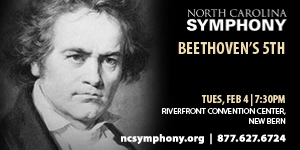This preview has been provided by Carolina Pro Musica.
Catherine de’ Medici’s patronage of the arts made a significant contribution to the French Renaissance. Catherine was inspired by her father-in-law, King Francis I of France (reigned 1515–1547), who had hosted the leading artists of Europe at his court. After the death of her husband, Henry II, in 1559, Catherine governed France on behalf of her young sons King Francis II (1559–60) and King Charles IX (1560–74). Once in control of the royal purse, she launched a program of artistic patronage which lasted for thirty years. She employed Italian artists and performers. By the 1560 local talent, trained and influenced by the foreign masters brought to France became prominent. Catherine patronized these new artists and presided over a distinctive late French-Renaissance culture. New forms emerged in literature, architecture, and the performing arts.
When Catherine attained real political and financial power as queen mother she begin the series of tournaments and entertainments, sometimes called “magnificences”, that dazzled her contemporaries and continue to fascinate scholars. To Catherine, these entertainments were worth their expense, since they served a political purpose. At a time when the French monarchy was in steep decline, she set out to show not only the French people but foreign courts that the Valois monarchy was as prestigious and magnificent as it had been during the reigns of Francis I and her husband Henry II. At the same time, she believed these elaborate entertainments and sumptuous court rituals, which incorporated martial sports and tournaments of many kinds, would occupy her feuding nobles and distract them from fighting against each other to the detriment of the country and the royal authority.
A highly talented and artistic woman, Catherine employed the leading writers, artists, and architects of the day, including Caron, Pilon, and Ronsard, to create the dramas, music, scenic effects, and decorative works required to animate the themes of the festivals, which were usually mythological and dedicated to the ideal of peace in the realm. Catherine de’ Medici’s magnificences took place over several days with individual lords and ladies and members of the royal family being responsible for preparing one particular entertainment. Spectators and participants, including those involved in martial sports, would dress up in costumes representing mythological or romantic themes. Catherine developed and increased the prominence of dance in the shows that climaxed each series of entertainments. After the dance performance Catherine often invited the audience to partake in social dance.
The air de cour was the leading secular musical genre in France from the late 16th to the mid-17th century. Accepted in aristocratic and learned circles, it had grown out of a lower-class vocal genre that was based on the principles of a simple strophic form that facilitated understanding of the text, and corresponded with the humanist ideals of the late Renaissance. The term “air de cour” made its first appearance in 1571 in Airs de cour mis sur le luth by Adrian Le Roy, Paris, Le Roy & Ballard. Upper circles of society took to singing refined poems and spirituals, as well as the ribald and often saucy lyrics of chansons brought together in collections which contained serious, inspired pieces depicting the passions of love, songs of praise, dedicatory airs, monodic and choral pieces taken from the great ballets performed at court, songs for drinking and dancing.
Carolina Pro Musica offers a sampling of air de cour including solo and multivoiced works published by Le Roy and composed ‘imports’ to France including Arcadelt. Texts of Ronsard and his contemporaries will be featured as will dances published by Attaignant. Also included will be variations on a few famous songs of the day including Sandrin’s Douce Memoire and Chardevoine’s Une Jeune Fillette.
References:
Knecht, R. J. Catherine de’ Medici. London and New York: Longman, 1998
Strong, Roy. Art and Power: Renaissance Festivals, 1450–1650. Woodbridge, UK: Boydell Press, 1984
Yates, Frances. The Valois Tapestries. 1959. London: Routledge & Kegan Paul, 1999











